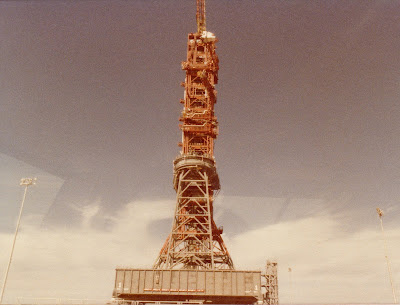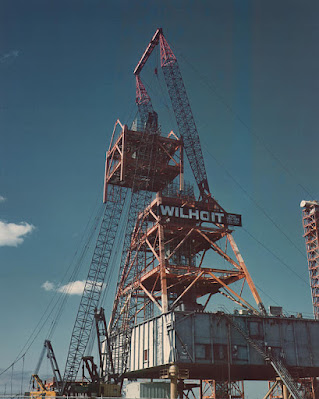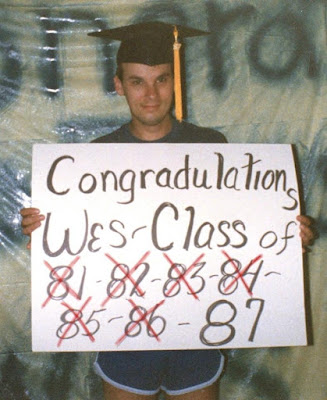GEMINI VI; 60
YEARS AGO TODAY- OCT. 25, 1965
THE SITUATION IS NOT A HAPPY ONE
On the cold morning of Monday, October
25th, 1965 I was seated at my desk inside Nelle Haley Elementary
School’s “Annex 3” as Mrs. Donna Bechtol, my third-grade teacher, attempted to
hold my fleeting attention so that she could practice her craft upon me.
Opened in 1958, Nelle Haley had been
quickly overwhelmed by the boom of residents rapidly moving into Sheridan Park.
The subdivision itself had started construction shortly after World War II and
by the mid-1960s only ¼ of the lots were still vacant and those would fill up
before 1970.
Meanwhile a new subdivision had sprung
up just outside the park and every new home meant at least two or three new
students enrolling into the tiny school. In order to cope with the student-boom
the school board had acquired three small houses near the school and after
ripping out the inner walls they monikered the make-shift classrooms as “Annex
1, 2 and 3” and I was unlucky enough to be assigned to one of them for the
third grade.
By late October I was so bored I could
scream and spent most of my time looking out the window- which was the one
benefit of the Annexes, they each had two large picture windows.
Any diversion from our standard third
grade routine was a welcome change as far as I was concerned. Once Mrs. Bechtol
got ticked at me and made me go “stand in the corner” while everyone else did
math. I thought that was great, all the other kids had to do school work while
I got to just stand there and ponder the previous evening’s episode of “Gilligan’s
Island.”
Today’s schedule of Annex 3 activities
sounded even better. After taking the attendance the teacher announced that
later this morning, we would all be walking over to the main school so that we
could watch a space launch on TV. Indeed, another Gemini launch was going to
rescue me from another catatonic morning of spelling, math and perhaps the
worst thing of all- reading aloud. I was so filled with cheer that I might have
even stopped doodling on my scribble paper.
Down at Cape Canaveral’s Launch Complex
14 just 1,048.26 miles from my perpetually boring desk in Mrs. Bechtol’s
classroom, the final minutes in the countdown of an Atlas Agena launch vehicle
were ticking away. Over at Launch Complex 19, astronauts Wally Schirra and Tom
Stafford were suited up and loaded aboard the Gemini VI spacecraft. They would
be launched as soon as it was established that the Atlas D had lofted the Agena
target vehicle and it was safely in orbit in good shape.

This Atlas D, vehicle 5301, was slated
to place into orbit what was officially known as Gemini Agena Target Vehicle, (GATV)
5002, for the crew of GT-6. Their mission was to accomplish the first ever
rendezvous and docking of two spacecraft.
Atlas 5301 had been on Pad 14 since
August 16th and was now ready to fly with the GATV mounted atop. So,
at 10:00 in the morning on October 25th the Atlas ignited, lifted
off and burned for 04:44 which was just three seconds longer than predicted.
From the shutdown of the Atlas’ sustainer stage the vehicles internal timer
counted off 26 seconds and then the Agena itself was separated and went into a
scheduled 40 second coast. What followed was about to wreck the whole morning for
me and for the folks in Project Gemini as well.
Atlas Agena 5301 boosting
After the Agena’s 40 second coast
period the target vehicle was programmed to ignite its Primary Propulsion
System (PPS) engine and insert itself into the prescribed orbit. When that
event was due to take place, suddenly almost all telemetry from the Agena
simply stopped.
At first the Agena Controller in
Houston reported “a momentary loss of signal.” Upon a second look he saw the
pressure in the PPS coming up and then the signal was abruptly lost. Ground
tracking stations began reporting “no joy” when asked if they could see
anything from the vehicle. The Bermuda tracking station continued to get an
S-band radio carrier signal from the Agena and the Antigua station got a C-band
signal which gave everyone some hope. But there really was no hope, the best
guess was that when the PPS ignited there was a catastrophic explosion that
simply blew the vehicle apart. The S-band and C-band transmitters were simply
still connected to their power sources and tumbling among the bits and pieces
of what was once the Agena. GATV 5002 was simply space junk.
NASA’s Paul Haney in announcing the
status reported,
“The situation here is not a very happy
one...”
As the time came for the Agena to pass
over the tracking stations at Australia, the story was the same- no telemetry.
With that, Schirra and Stafford, who had been aboard their Gemini spacecraft for
just under two hours, were given the news that the GT-6 mission was officially
scrubbed. The situation there was not a very happy one either.
A few minutes after word of the scrub
was made public, the black telephone in Annex 3 rang and Mrs. Bechtol answered.
She spoke, hung up, shuffled some papers and then informed the class that we
would not be walking over to see the space launch because it had been
cancelled.
Well, that wrecked my whole morning.
There I sat as Mrs. Bechtol ordered the whole class to get out our spelling
books. The situation was not a very happy one.
Within a week it was concluded that the
loss of GATV 5002 was caused by a “Hard Start” of the PPS engine. The PPS
engine used hypergolic propellants, which combust on contact. Although more
than 180 Agenas had flown prior to Project Gemini, all had led their start
sequence by use of the oxidizer feed line. For the GATV Agenas, however,
Lockheed had decided to lead with the fuel feed line injecting into the
combustion chamber. That change led to the loss of GATV 5003 and reversing that
change, it was thought, would eliminate the problem.
Shortly after the scrub was called,
Schirra and Stafford returned to the crew quarters on Merritt Island. Their
GT-6 spacecraft was the last Gemini to be equipped with battery power alone;
all future flights were scheduled to run on fuel cells plus batteries. Thus,
without an Agena, the crew had no mission. Schirra had been campaigning to get
the first rendezvous since his Mercury flight- this was his baby and now it was
gone. As the crew got aboard their T-38s and flew back to Houston, the
situation during that flight was not a very happy one.
Oh sure… but they weren’t stuck in
Annex 3 with Donna Bechtol.
This is an excerpt from Wes Oleszewski's book "Growing Up With Spaceflight- Gemini." All rights reserved Copyright 2015. You can get the book on Amazon in print or in e-book HERE



















L.jpg)




























